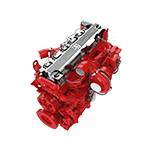Nov . 23, 2024 00:07 Back to list
disc brake drum brake
The Evolution and Significance of Disc Brakes and Drum Brakes in Automotive Engineering
In the ever-evolving world of automotive engineering, the braking system remains one of the most vital components of vehicle safety and performance. Among the myriad of braking technologies available, two of the most prominent types are disc brakes and drum brakes. Both have unique characteristics, advantages, and disadvantages, and understanding these can enhance our appreciation for the technology that keeps us safe on the road.
Disc Brakes Efficiency and Performance
Disc brakes consist of a flat, circular disc attached to the wheel hub, and when the brake pedal is engaged, brake pads clamp down on the disc, creating friction that slows the vehicle. This design allows for better heat dissipation compared to drum brakes, making disc brakes less susceptible to brake fade — a reduction in stopping power due to overheating. Consequently, disc brakes are widely regarded for their superior performance in high-stress driving conditions, such as racing or heavy-duty driving.
The use of disc brakes also allows for a more responsive braking experience. The direct contact between the brake pads and disc ensures that braking force is applied quickly and effectively. This responsiveness is essential for modern cars that boast high speeds and advanced safety features. Furthermore, disc brakes require less maintenance than drum brakes, as they are less prone to issues like moisture or mud accumulation, which can impede braking performance.
Drum Brakes The Traditional Choice
Drum brakes, on the other hand, utilize a cylindrical drum that rotates with the wheel. Inside the drum, brake shoes press outward against the inner surface of the drum when the brakes are applied. Despite being an older technology, drum brakes are still commonly used in many vehicles, particularly in rear installations and in certain types of commercial vehicles.
disc brake drum brake

One of the significant advantages of drum brakes is their ability to generate more torque than disc brakes of comparable size. This characteristic makes them well-suited for vehicles that require strong braking force to manage heavy loads. Furthermore, the enclosed design protects the internal components from dirt and debris, which can enhance longevity and reliability in specific environments, such as construction sites or rural areas.
However, drum brakes also come with notable drawbacks. They tend to retain heat more than disc brakes, which can lead to brake fade under extreme use. The complexity of the drum brake design also means that they can be more challenging to service — brake shoe replacement, for instance, can be more labor-intensive than changing disc brake pads.
Comparative Analysis and Current Trends
In the automotive industry, the trend has increasingly leaned toward the adoption of disc brakes, especially in high-performance and modern vehicles. Many manufacturers equip their cars with disc brakes on all four wheels to enhance safety and braking performance. However, drum brakes still hold an important place in certain markets and applications, given their cost-effectiveness and ability to handle specific demands.
Hybrid systems that combine both disc and drum brakes are also gaining attention. For example, some vehicles utilize disc brakes on the front wheels for optimal stopping power while employing drum brakes on the rear wheels for cost savings and efficient towing capabilities.
Conclusion
Understanding the differences between disc brakes and drum brakes highlights the ongoing evolution of automotive technology. While disc brakes excel in performance and efficiency, drum brakes maintain their relevance due to their unique benefits and capabilities. As vehicles continue to advance with innovations such as electric braking and automated systems, the discussion between these two technologies will likely evolve, ensuring that safety remains at the forefront of automotive design. In the end, the choice between disc brakes and drum brakes depends on the specific needs and applications, illustrating the beauty of engineering diversity in the automotive industry.
-
YORK GPT-4 Turbo: Fast AI for Enhanced Efficiency
NewsAug.04,2025
-
High-Performance Nissan Brake Drum | Durable Braking
NewsAug.03,2025
-
FRUEHAUF AI Trailers with GPT-4 Turbo Innovation
NewsAug.02,2025
-
TATRA: Supercharge AI with GPT-4 Turbo Technology
NewsAug.01,2025
-
2014 Mitsubishi Mirage Rear Brake Drums | Durable & Precise
NewsJul.31,2025
-
High-Quality Trailers for Towing Needs | Shop Now
NewsJul.25,2025
